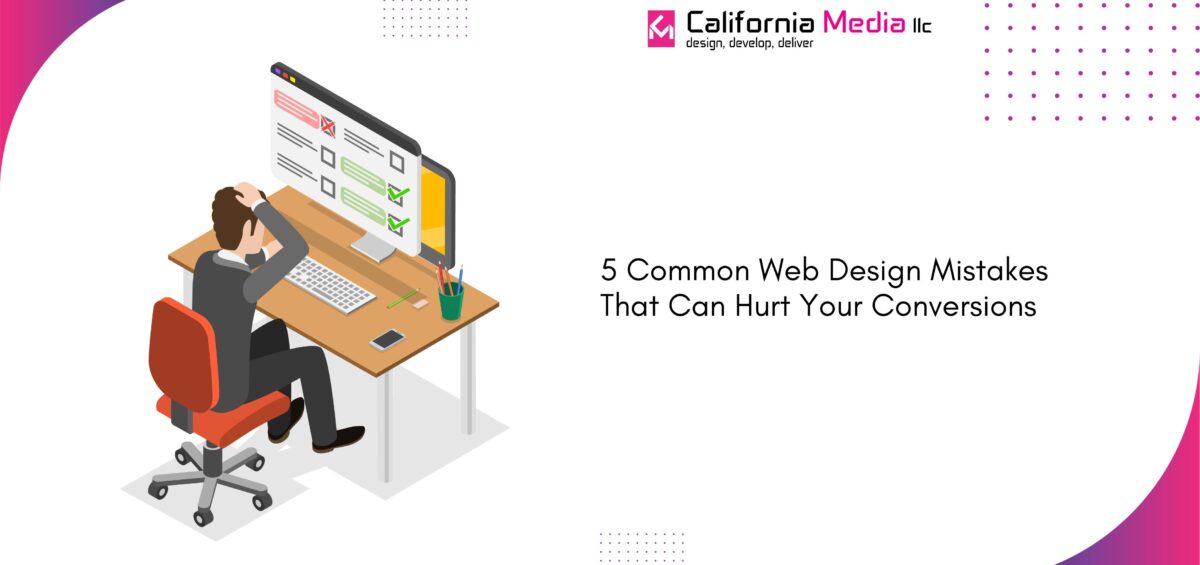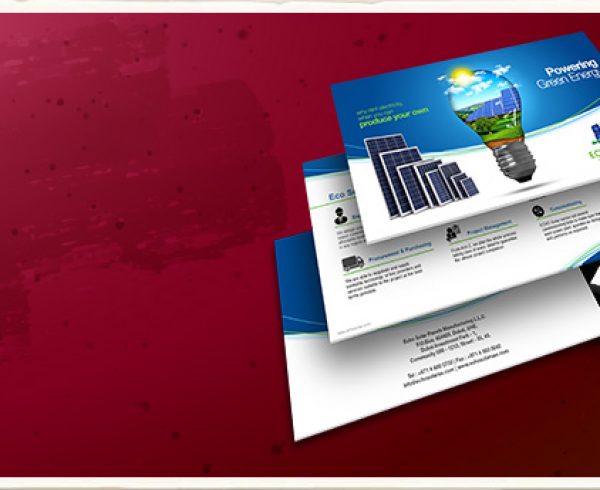In today’s digital-first world, your website is often the first impression potential customers have of your brand. It’s your online storefront — the place where visitors decide whether to stay, engage, and eventually convert. Yet, even the most visually appealing websites can fail to generate leads or sales if they are not strategically designed.
At California Media LLC, a leading web design company in Dubai, we’ve seen countless businesses struggle with conversion rates simply because of a few avoidable design mistakes. In this blog, we’ll uncover the five most common web design mistakes that hurt conversions and how you can fix them to turn your website into a powerful sales machine.
1. Slow Website Loading Speed
You could have a stunning design and great content, but if your website takes too long to load, visitors will leave before they even see it. According to research by Google, 53% of mobile users abandon a site that takes longer than 3 seconds to load. That’s a massive hit to your conversions right from the start.
A slow website frustrates users and sends negative signals to search engines, which can lower your ranking and visibility. Common causes of slow loading speed include:
- Unoptimized high-resolution images
- Heavy scripts and plugins
- Poor hosting servers
- Unnecessary animations or videos
- Lack of caching and CDN support
💡 How to Fix It:
- Compress all images using tools like TinyPNG or WebP format.
- Minimize the use of third-party plugins and scripts.
- Choose a reliable hosting provider (preferably VPS or dedicated servers).
- Implement caching and a Content Delivery Network (CDN).
- Test your website speed regularly using Google PageSpeed Insights or GTmetrix.
A fast-loading website improves both user experience and SEO performance, directly influencing conversion rates.
2. Poor Mobile Responsiveness
With over 70% of users browsing from mobile devices, a non-responsive design is one of the biggest mistakes a business can make. If your site looks great on a desktop but breaks on mobile — with tiny fonts, unclickable buttons, or awkward layouts — users will leave instantly.
Mobile responsiveness ensures your website automatically adjusts to different screen sizes and devices. More importantly, Google uses mobile-first indexing, meaning your mobile site is prioritized for search ranking.
💡 How to Fix It:
- Use a responsive web design framework like Bootstrap or Tailwind CSS.
- Test your website on multiple devices (smartphones, tablets, etc.).
- Ensure buttons are large enough for tapping and text is easily readable.
- Simplify navigation for mobile users — think of thumb-friendly menus.
- Avoid intrusive pop-ups that block the main content on small screens.
At California Media LLC, our web design experts ensure every project is fully responsive and user-friendly across all devices. After all, your audience deserves a seamless experience wherever they browse.
3. Cluttered Layout and Poor Navigation
Have you ever visited a website that felt overwhelming — too much text, flashing banners, multiple pop-ups, and confusing menus? That’s a major conversion killer. A cluttered design distracts visitors from what’s important and prevents them from taking desired actions like signing up, filling a form, or making a purchase.
The golden rule of web design is simplicity and clarity. Each page should have a clear purpose and a defined action for the user to take.
Common layout and navigation mistakes include:
- Too many CTAs (Call-to-Actions) on a single page
- Hidden menus or unclear site structure
- Distracting auto-play videos or animations
- Overloaded text and irrelevant images
💡 How to Fix It:
- Follow the “less is more” approach — remove unnecessary elements.
- Keep navigation simple and intuitive (Home, Services, About, Contact).
- Use whitespace strategically to guide users’ attention.
- Place one clear CTA per page (e.g., Get a Quote, Contact Us, or Shop Now).
- Ensure all pages are accessible within 2–3 clicks from the homepage.
A clean, well-structured design builds trust, keeps visitors focused, and drives them toward conversion.
4. Weak or Confusing Call-to-Actions (CTAs)
A Call-to-Action (CTA) is one of the most critical elements in web design — it tells visitors exactly what you want them to do next. Unfortunately, many businesses either hide their CTAs, use too many of them, or create ones that are vague or uninspiring.
Phrases like “Click Here” or “Submit” don’t tell users what they’ll gain. Instead, effective CTAs should be specific, benefit-driven, and visually prominent.
Examples of weak CTAs:
- “Learn More” (about what?)
- “Submit” (why should I?)
Examples of strong CTAs:
- “Get Your Free Consultation Now”
- “Start Your Website Project Today”
- “Request a Free Quote in 60 Seconds”
💡 How to Fix It:
- Use contrasting colors to make CTAs stand out.
- Keep the language action-oriented and customer-focused.
- Place CTAs above the fold and again at the end of key sections.
- Test different CTA versions (A/B testing) to see which converts better.
Remember — your CTA is the bridge between interest and conversion. Make it impossible to miss.
5. Ignoring User Experience (UX) and Trust Elements
Even if your website is fast and mobile-friendly, poor user experience can still drive visitors away. Conversion is not just about design — it’s about how visitors feel when they use your website. If the navigation is confusing, forms are too long, or the content feels untrustworthy, users will bounce quickly.
Another overlooked factor is trust signals — the subtle design elements that reassure visitors that your business is legitimate and reliable.
Common UX and trust mistakes include:
- No SSL certificate (shows “Not Secure” warning)
- Missing testimonials or case studies
- Complicated checkout or inquiry process
- No visible contact information or address
- Outdated design or broken links
💡 How to Fix It:
- Simplify forms — ask only for essential information.
- Add testimonials, reviews, and client logos.
- Display certifications, awards, and partnership badges.
- Make your contact details easily visible on every page.
- Ensure your website is fully secured with HTTPS.
At California Media LLC, we integrate strong UX principles into every web design project — ensuring visitors not only stay longer but also trust your brand enough to convert.
Bonus Tip: Not Aligning Design with SEO
While not a “design flaw” in the visual sense, ignoring SEO (Search Engine Optimization) during the design phase can severely limit your website’s reach and conversion potential. A beautiful website is useless if no one can find it.
Make sure your site is optimized for:
- Fast loading speed (a key ranking factor)
- Mobile responsiveness (for higher visibility)
- Proper meta titles and descriptions
- Optimized images and ALT tags
- Structured content hierarchy (H1, H2, H3 tags)
A conversion-focused web design should always go hand-in-hand with an SEO strategy. That’s why many businesses in Dubai choose California Media LLC — a full-service digital agency offering both web design and SEO services in Dubai to ensure maximum online visibility and lead generation.
Conclusion: Design with Conversions in Mind
Your website isn’t just a digital brochure — it’s a conversion engine. Every design decision, from layout to typography, plays a role in how effectively it converts visitors into customers.
Avoiding these five common web design mistakes — slow speed, poor responsiveness, cluttered layout, weak CTAs, and bad UX — can dramatically improve user engagement and business growth.
At California Media LLC, we specialize in crafting high-performing, conversion-driven websites that combine creativity, technology, and marketing expertise. Whether you need a new website design, website development, or SEO services in Dubai, our team ensures your online presence doesn’t just look good — it delivers measurable results.
Ready to upgrade your website?
Contact California Media LLC today and let our experts help you design a website that converts visitors into loyal customers.









